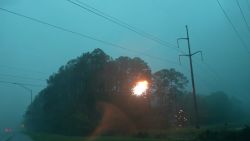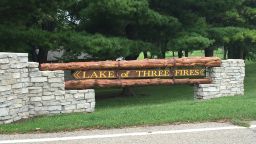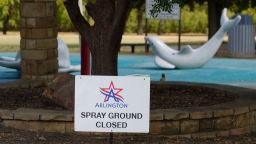The US Centers for Disease Control and Prevention has confirmed a Nebraska child who died after swimming was infected with the brain-eating amoeba Naegleria fowleri, an epidemiologist for the state, Dr. Matthew Donahue, told CNN.
The amoeba is typically found in freshwater lakes and rivers. The CDC’s confirmation means this is the first known death from Naegleria fowleri in Nebraska’s history,” according to the state Department of Health and Human Services.
The child, whose age was not disclosed, died this week in Douglas County, its health department said.
The child is believed to have been exposed to Naegleria fowleri while swimming August 8 in a shallow area of the Elkhorn River, and symptoms began about five days after that, county Health Director Lindsay Huse said Thursday in a news conference.
The child was admitted to a hospital within 48 hours of the onset of symptoms and died days later, said Dr. Kari Neemann, a pediatric infectious disease physician and a medical adviser for Douglas County.
Naegleria fowleri is an amoeba commonly found in warm freshwater lakes, rivers, canals and ponds throughout the United States, the Nebraska health department said.
“It can cause primary amebic meningoencephalitis (PAM), a brain infection that may result when water containing the amoeba rushes up the nose and reaches the brain,” the department said. “The infection is extremely rare, but nearly always fatal.”
A Missouri resident died in July shortly after being diagnosed with a Naegleria fowleri infection after visiting a beach in Iowa. And a child in North Texas died in September after contracting the brain-eating amoeba at a public splash pad.
The CDC conducted further testing to confirm the cause of the child’s death this week, the county health department said.
While the odds of infection with Naegleria fowleri are low, health experts say there are precautions people can take when considering swimming in freshwater lakes and rivers.
“Millions of recreational water exposures occur each year, while only 0 to 8 Naegleria fowleri infections are identified each year,” Donahue said.
Infections typically occur between July and September in warmer water with slower flow, Donahue added.
“Cases are more frequently identified in southern states but more recently have been identified farther north,” Donahue said. “Limiting the opportunities for freshwater to get into the nose are the best ways to reduce the risk of infection.”
The Nebraska health department urged caution when participating in activities in warm freshwater during times of prolonged high temperatures. It offered several key points about the risk of Naegleria fowleri infection:
• Behaviors associated with the infection include diving or jumping into the water, submerging the head underwater or engaging in other water-related activities that cause water to go up the nose forcefully.
• Swimmers can reduce their risk by keeping their heads out of the water and using nose clips or plugging their noses when going underwater. Swimmers should also avoid digging or stirring up the sediment at the bottom of the lake or river.
• People can’t get infected by swimming in a pool that has been properly cleaned and is maintained and disinfected. They also can’t get it from drinking contaminated water.
• Avoid submersing your head in hot springs and other untreated thermal water.
• Avoid digging in or stirring up the sediment while taking part in water-related activities in shallow, warm freshwater areas.


















